You want to grow your business. Just one small thing. You need a game-changing idea to push your enterprise forward. We propose 5 solutions to get the juices flowing. Read on to find out where the founders of some successful businesses get their ideas.
Entrepreneurs are people who take an idea and translate it into a successful business. Over 550,000 people in the USA step into this river each month. There are those that drown, some that swim and the lucky few who reach success from the first time.
Great ideas can come from anywhere. You can discover opportunities by examining your own needs and problems, bringing your personal experience. You can also borrow and reuse an old thought.
So for example, our Client has approached with a complete idea to develop a platform for healthcare professionals from scratch. Because he has wide experience in software development, he finds it easy to generate new ideas.
The constant flow of new ideas, discussions and phased implementation of relevant solutions contribute to reducing refactoring hours, thus cutting costs for our Client.
However, what if you are out of ideas?
 Source:reddit.com/r/funny/comments/8hgz7u/how_tech_company_names_are_created
Source:reddit.com/r/funny/comments/8hgz7u/how_tech_company_names_are_created
‘The world around you is filled with ideas that can be useful.’
Andy Boynton, co-author of the Idea Hunter
By learning to think and act in ways that shed light on new opportunities, you can find a steady stream of business ideas in everyday life. Here are some tips to help you generate new ones using the world around you.
Look for what’s missing
As you consider new ideas for your project or business, give greater credence to the thoughts you believe to be true, even if the others are skeptical. Scott Belsky, CPO of Adobe, is sure the most exciting products are created by people with convictions for something that seems odd for the others.
Before Airbnb became a giant online marketplace for sharing homes and spaces, it was several airbeds on a floor in San Francisco. The company started in 2007 when Joe Gebbia and Brian Chesky were struggling to pay their rent and decided to make extra bucks.
There was a design conference coming to the city and the local hotels were fully booked. Gebbia and Chesky came up with the idea of renting three airbeds on their living-room floor and making their guests breakfast.
‘The moment when we thought this idea wasn't going to work was the moment we came up with it. We thought, "This'll work for one weekend to pay the bills while we come up with The Big Idea." People still said it was absurd’
The next day they created a simple website, airbedandbreakfast.com. Six days later they sheltered their first guests who pay $80 each per night. The idea of creating a website based on renting something that was already in exist was great. Thus, they decided to target conferences and festivals across the U.S., getting local people to offer their room and travelers to book them.
‘Tonight, just on our service, 785,000 people in 191 countries will either stay in a stranger's home or welcome one into theirs. Clearly, it's not as crazy as we were taught. [...] Now, we know design won't solve all the world's problems. But if it can help out with this one, if it can make a dent in this, it makes me wonder, what else can we design for next?’
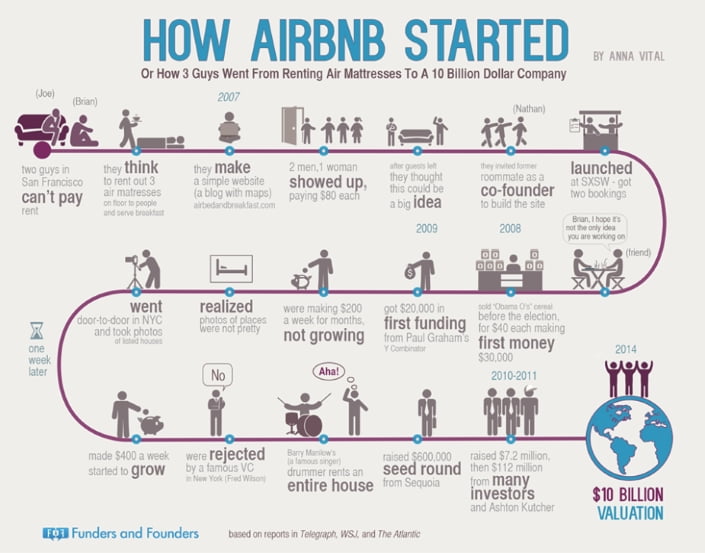 Source:blog.adioma.com/how-airbnb-started-infographic
Source:blog.adioma.com/how-airbnb-started-infographic
However, what if you find the idea absurd? Then think about how crazy the “mobile phones” must have sounded in the early 1990s, when phones were attached to objects. But they have spread so quickly that less than 25 years later there were more mobile phones in the world than people.
Or how ridiculous the notion of a car that goes faster than 10 mph must have seemed to Carl Benz when he made his first vehicle. But after 133 years, stock cars are able to go over 200 miles an hour.
In the age of constant change, standing still is not an option. To make profits, entrepreneurs have to shape the future. What technology or advancement is coming soon? How will that change the business landscape as you know it? And finally, can you get ahead of the curve? Crazy ideas can facilitate invaluable insights and keep you in front of what will come next.
Get feedback from real customers
If your business can fix a problem for your customers, they thank you for it (and produce profit). So how to figure out what exactly your customers need?
Let people interact with your product and see what their vision is for it. A fresh perspective can help point out a problem you might have missed.
One of the most common ways to receive feedback is to get a focus group. Thus, deliberately selected people who participate in the discussion elicit consumer perception about a product or its particular features.
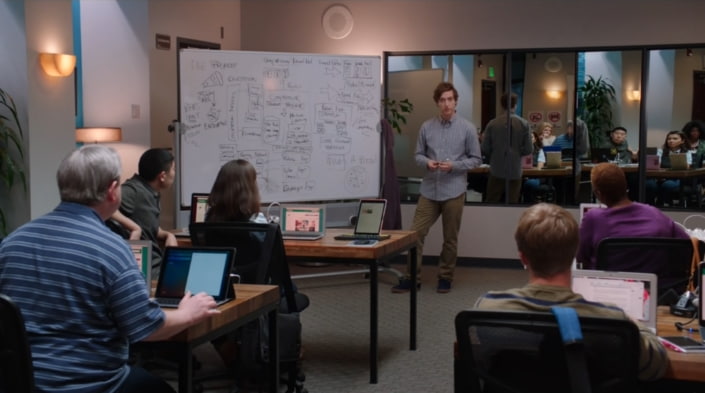 Source:playbacksociety.com/blog/recap-silicon-valley-s3ep9-tables-focus-groups-and-the-elephant
Source:playbacksociety.com/blog/recap-silicon-valley-s3ep9-tables-focus-groups-and-the-elephant
The purpose of a focus group is not to arrive at a consensus. They are created to identify the feelings, impression, and thoughts of consumers about a particular solution.
Thus, for example, our Client from healthcare industry hired a focus group consisting of 2 hospital workers. During the development cycle, we were able to show them a software prototype, figure out why they liked or didn’t like something and how could we make it better.
However, they were only 2 orthopedists from one hospital among millions of people and practices. And after a while, they were out of ideas about how to improve the Client’s software.
As such, we provide the following options to improve business ideation process:
- Conducting several focus groups. In the case of our Client, he could expand the group by hiring healthcare professionals of different practice areas and from different hospitals.
- Referring to healthcare consulting services. Usually, there are advisers with a solid clinical background and in-depth knowledge of healthcare practices in a hospital or other institutions. Based on the experience, they provide more information about further product development and more quickly.
Get your team brainstorming great ideas
No matter how creative you may be, you can always turn to your employees for some extra brain power. One major issue for many business leaders comes down to this: How to boost consistent, critical and creative thinking throughout your enterprise?
‘I come up with ideas. We could sit here with an idea, and I could fill this whiteboard in an hour with 100 ideas.If I have a week with no brainstorming meetings, I complain to my office, like "Come on, guys, help me here."’
Jeff Bezos, CEO and founder of Amazon
It is essential to add some structure and refer to the objective. While brainstorming you won’t get significant results if everyone just starts shouting out their thoughts. This gives too much weight to the team’s louder members and suppresses the input of quieter shy participants.
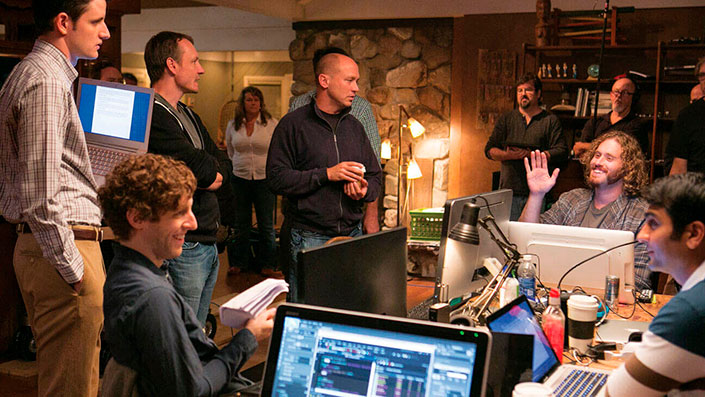 Source:hollywoodreporter.com/live-feed/hbos-silicon-valley-tech-advisor-695513
Source:hollywoodreporter.com/live-feed/hbos-silicon-valley-tech-advisor-695513
Shayla Callis, design and innovation leader at Farmers Insurance, found that brainstorming while embarking upon the design thinking process can facilitate business ideation.
Callis suggests opening with a clear, exact “challenge statement” or statement of purpose. What specific problem are you trying to solve? Then describe the end user by putting yourself in their shoes. Who will the solution impact? What are their experiences? After understanding who you are designing for, you are ready to begin brainstorming.
IBM has also adhered to the corporate trend in design thinking since 2012. However, traditional design thinking theories came in the late 1980s and seemed more suitable to smaller, creativity-focused companies. As a corporate titan, IBM had to adopt the canonical approach for implementation across a sprawling, complex business.
‘We wanted to shift that culture [engineering-centric] towards a focus on users' outcomes’
Charlie Hill, chief technology officer of IBM Design
In total, the company has developed about a hundred products using design thinking. The most popular is Bluemix, IBM’s cloud platform for developing apps.
Upgrade your corporate hierarchy
Jeff Bezos is currently the richest person on the planet. As of September 2018, Amazon was valued at $1 trillion. Obviously, Bezos would never have come this far without having skills for determining and cultivating game-changing ideas.
In his interview with Forbes, Bezos assessed the thought process he goes through when deciding where to move forward with a new initiative. Thus, for example, he upgraded a corporate hierarchy at Amazon.
According to Bezos, a traditional corporate hierarchy is as follows:
‘Let's say a junior executive comes up with a new idea that they want to try. They have to convince their boss, their boss's boss, their boss's boss's boss and so on - any 'no' in that chain can kill the whole idea’
However, flexible startups showed Bezos the opposite: even if 19 venture capitalists say no, it just takes a 20th to say yes to get a disruptive idea into a business.
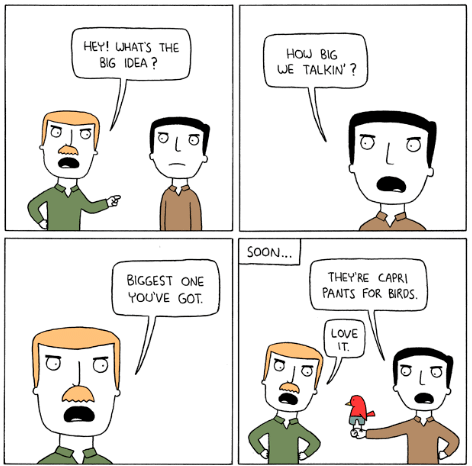 Source:me.me/i/hey-whats-the-big-idea-biggest-one-youve-got-how-13308255
Source:me.me/i/hey-whats-the-big-idea-biggest-one-youve-got-how-13308255
Consequently, Bezos structured Amazon around the “multiple paths to yes” pattern, especially regarding “two-way doors”: decisions that are often based on incremental improvements and can be reversed if they prove unwise. Hundreds of executives can green-light an idea, which employees can determine internally.
As for the larger ideas and “one-way doors” that affect the direction of Amazon, Bezos plays the role of “chief slowdown officer”. He pays particular attention to three things.
First, originality.
‘We have to have a differentiated idea. It can't be a 'me too' offering.’
Second, scale.
‘We're gifted with some very large businesses we've built over time, and we can't afford to put our energies into something that if it works, it's still going to be small.’
And third, a Silicon Valley-worthy ROI.
‘Even at substantial scale, it has to have good returns on capital.’
Finally, verified ideas emanate from one of the two models. They look backward at customer needs. If the team has noticed people commit a specific act, so they try to serve them with a product. Or peering forward - they know how to do something valuable, so they find customers.
Bezos is sure: once you have a success, don’t rest on your laurels.
‘Friends congratulate me after a quarterly-earnings announcement and say, 'Good job, great quarter,' and I'll say, 'Thank you, but that quarter was baked three years ago.' I'm working on a quarter that'll happen in 2021 right now.’
Books on coming up with innovative ideas
There are thousands of books on creativity and innovation at large. These are just a few to get entrepreneurs jump-starting their creative thinking:
The Accidental Creative by Todd Henry

A read on how to generate brilliant ideas at a moment’s notice. See on Amazon.
Business Model Generation: A Handbook for Visionaries, Game Changers, and Challengers

A manual on practical innovation techniques used by leading business thinkers and companies worldwide. See on Amazon.
Creative Confidence by Tom and David Kelley

The principles and strategies to tap into the creative potential in everyday life and innovate in terms of how businesses approach and solve problems. See on Amazon.
The Innovator’s DNA by Jeff Dyer, Hal Gregersen, and Clayton M. Christensen
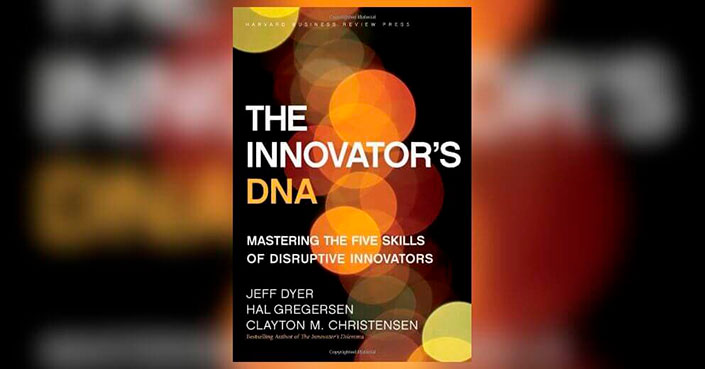
A set of five skills that leaders use to develop entrepreneurial ideas (questioning, observing, networking, experimenting, and associating) and how to cultivate them. See on Amazon.
Making Ideas Happen by Scott Belsky
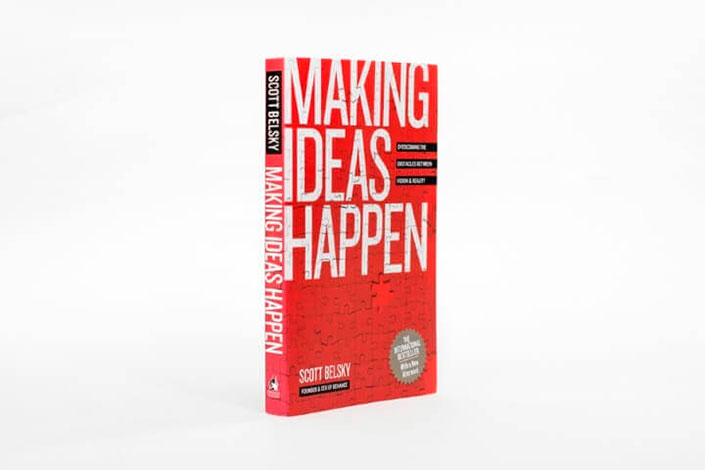
A systematic approach to merging creativity with productivity. See on Amazon.
Conclusion
Don’t expect ideation to be a one-and-done process. Creative solutions don’t usually arrive in a single blinding flash of insight. Meet people and ask them for feedback, seek advice from your colleagues, retrieve ideas online or use whatever method makes the most sense to you. A combination of such techniques brings the most efficient results during business ideation.
Rate this article
Recommended posts
Our Clients' Feedback


















.jpg)
.png)
.png)
.jpg)
.png)
.jpg)
.jpg)
.png)
.jpg)
.jpg)
.jpg)
.png)
.png)
.jpg)
.jpg)
.jpg)
.jpg)
.jpg)
.png)
.png)
.png)
.jpg)
















We have been working for over 10 years and they have become our long-term technology partner. Any software development, programming, or design needs we have had, Belitsoft company has always been able to handle this for us.
Founder from ZensAI (Microsoft)/ formerly Elearningforce